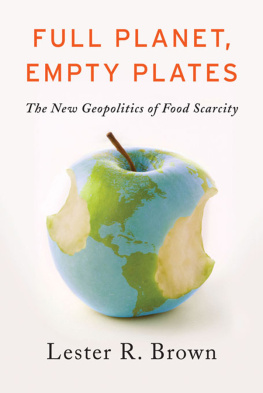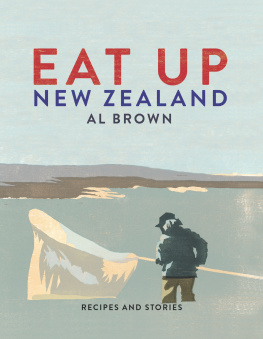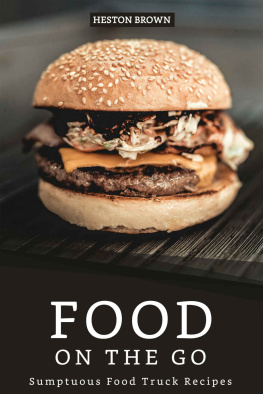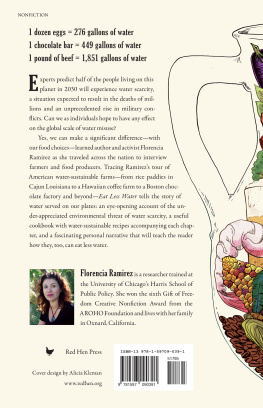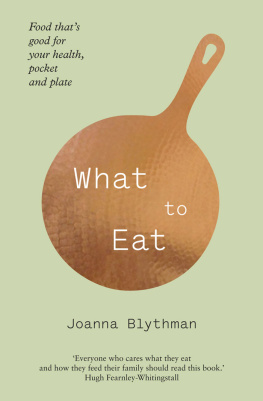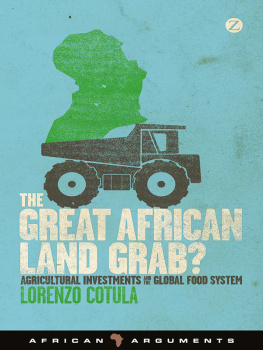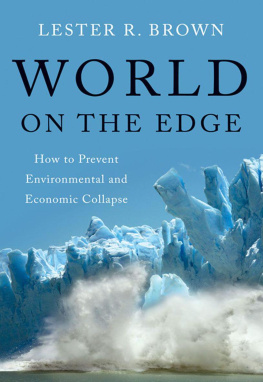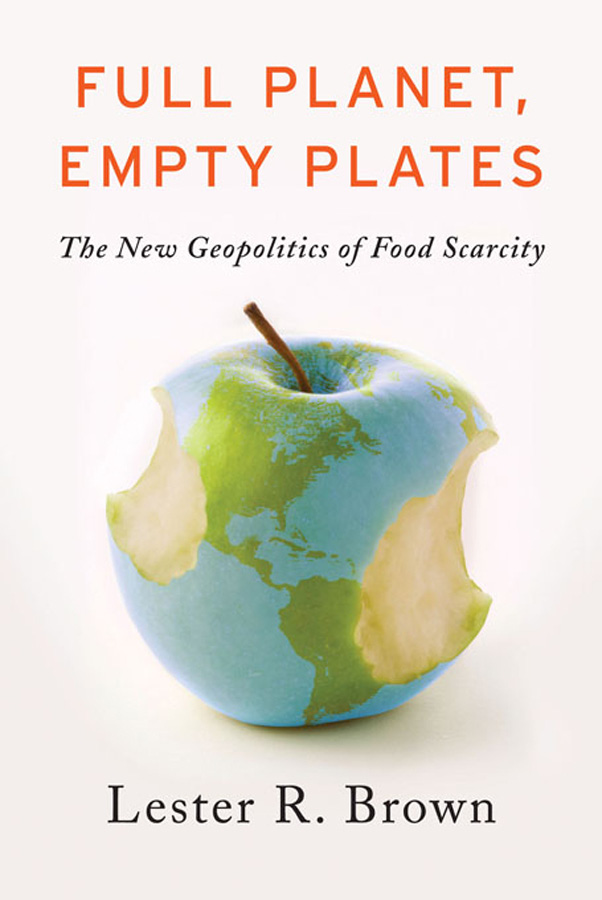
OTHER NORTON BOOKS
BY LESTER R. BROWN
World on the Edge: How to Prevent Environmental and Economic Collapse
Plan B 4.0: Mobilizing to Save Civilization
Plan B 3.0: Mobilizing to Save Civilization
Plan B 2.0: Rescuing a Planet Under Stress and a Civilization in Trouble
Outgrowing the Earth: The Food Security Challenge in an Age of Falling Water Tables and Rising Temperatures
Plan B: Rescuing a Planet under Stress and a Civilization in Trouble
The Earth Policy Reader with Janet Larsen and Bernie Fischlowitz-Roberts
Eco-Economy: Building an Economy for the Earth
State of the World 1984 through 2001 annual, with others
Vital Signs 1992 through 2001 annual, with others
Beyond Malthus with Gary Gardner and Brian Halweil
The World Watch Reader 1998 editor with Ed Ayres
Tough Choices
Who Will Feed China?
Full House with Hal Kane
Saving the Planet with Christopher Flavin and Sandra Postel
Building a Sustainable Society
Running on Empty with Colin Norman and Christopher Flavin
The Twenty-Ninth Day
In the Human Interest
Earth Policy Institute is a nonprofit environmental research organization providing a plan for building a sustainable future. In addition to the Plan B series, the Institute issues four-page Plan B Updates that assess progress in implementing Plan B. All of these plus additional data and graphs can be downloaded at no charge from www.earth-policy.org.
FULL PLANET,
EMPTY PLATES

The New Geopolitics
of Food Scarcity
Lester R. Brown
EARTH POLICY INSTITUTE
W W NORTON & COMPANY
NEW YORK LONDON
In Memory of
Blondeen Gravely
19442012
Contents

Permission for reprinting or excerpting portions of the manuscript can be obtained from Reah Janise Kauffman at Earth Policy Institute. For full citations, data, and additional information on the topics discussed in this book, see www.earth-policy.org .

Preface
We started this book in the spring of 2012, corn planting time. U.S. farmers were planting some 96 million acres in corn, the most in 75 years. A warm early spring got the crop off to a great start. Analysts were predicting the largest corn harvest on record.
The United States is the worlds leading producer and exporter of corn. At home, corn accounts for four fifths of the U.S. grain harvest. Internationally, the U.S. corn crop exceeds Chinas rice and wheat harvests combined. While wheat and rice are the worlds leading food grains, corn totally dominates the use of grain in livestock and poultry feed.
The U.S. corn crop is as sensitive as it is productive. A thirsty, fast-growing plant, corn is vulnerable to both extreme heat and drought. At elevated temperatures, the corn plant, which is normally so productive, goes into thermal shock.
As spring turned into summer, the thermometer began to rise across the Corn Belt. In St. Louis, Missouri, in the southern Corn Belt, the temperature in late June and early July climbed to 100 degrees or higher 10 days in a row. The entire Corn Belt was blanketed with dehydrating heat. And summer was just beginning.
The temperature was rising, but the rain was not falling. The combination of record or near-record temperatures and low rainfall was drying out soils. Weekly drought maps published by the University of Nebraska showed drought-stricken areas spreading across more and more of the country until, by early July, these areas were engulfing virtually the entire Corn Belt. Soil moisture readings in the Corn Belt were among the lowest ever recorded.
While temperature, rainfall, and drought serve as indirect indicators of crop growing conditions, each week the U.S. Department of Agriculture releases a report on the actual state of the corn crop. This year the early reports were promising. On June 4th, 72 percent of the U.S. corn crop was rated as good to excellenta strong early rating. But on June 11th the share of the crop in this category dropped to 66 percent. And then with each subsequent week it dropped further, until by July 9th only 40 percent of the U.S. corn crop was rated good to excellent. The other 60 percent was in very poor to fair condition. And the crop was still deteriorating.
Even during the few months when we were working on this book we were beginning to see how the more-extreme weather events that come with climate change can affect food security. Between the beginning of June and mid-July, corn prices increased by one third. Although the world was hoping for a good U.S. harvest to replenish dangerously low grain stocks, this will not likely happen.
World carryover stocks of grain will fall further at the end of this crop year, making the food situation even more precarious. Food prices, already elevated, will be climbing higher, quite possibly to record highs.
Not only is the current food situation deteriorating, so is the global food system itself. We saw early signs of the unraveling in 2008 following an abrupt doubling of world grain prices. As world food prices climbed, exporting countries began restricting exports to keep their domestic prices down. In response, governments of importing countries panicked. Some of them turned to buying or leasing land in other countries on which to produce food for themselves.
Welcome to the new geopolitics of food scarcity. As food supplies tighten, we are moving into a new food era, one in which it is every country for itself.
The world is in serious trouble on the food front. But there is little evidence that political leaders have yet grasped the magnitude of what is happening. The progress in reducing hunger in recent decades has been reversed. Feeding the worlds hungry now depends on new population, energy, and water policies. Unless we move quickly to adopt new policies, the goal of eradicating hunger will remain just that.
The purpose of this book is to help people everywhere recognize that time is running out. The world may be much closer to an unmanageable food shortagereplete with soaring food prices, spreading food unrest, and ultimately political instabilitythan most people realize. This book is an effort by our Earth Policy research team to raise public understanding of the challenge that we are facing and to inspire action.
Lester R. Brown
July 2012
Earth Policy Institute
1350 Connecticut Ave. NW, Suite 403
Washington, DC 20036
Phone: (202) 496-9290
Fax: (202) 496-9325
epi@earth-policy.org
www.earth-policy.org

Food:
The Weak Link
The world is in transition from an era of food abundance to one of scarcity. Over the last decade, world grain reserves have fallen by one third. World food prices have more than doubled, triggering a worldwide land rush and ushering in a new geopolitics of food. Food is the new oil. Land is the new gold.
The abrupt rise in world grain prices between 2007 and 2008 left more people hungry than at any time in history. It also spawned numerous food protests and riots. In Thailand, rice was so valuable that farmers took to guarding their ripened fields at night. In Egypt, fights in the long lines for state-subsidized bread led to six deaths. In poverty-stricken Haiti, days of rioting left five people dead and forced the Prime Minister to resign. In Mexico, the government was alarmed when huge crowds of tortilla protestors took to the streets.
Next page
